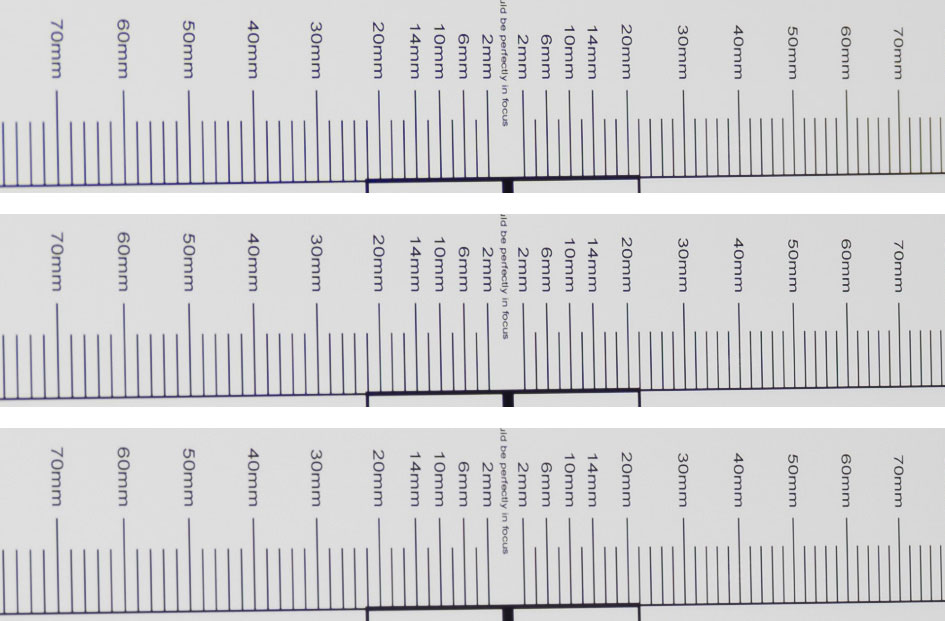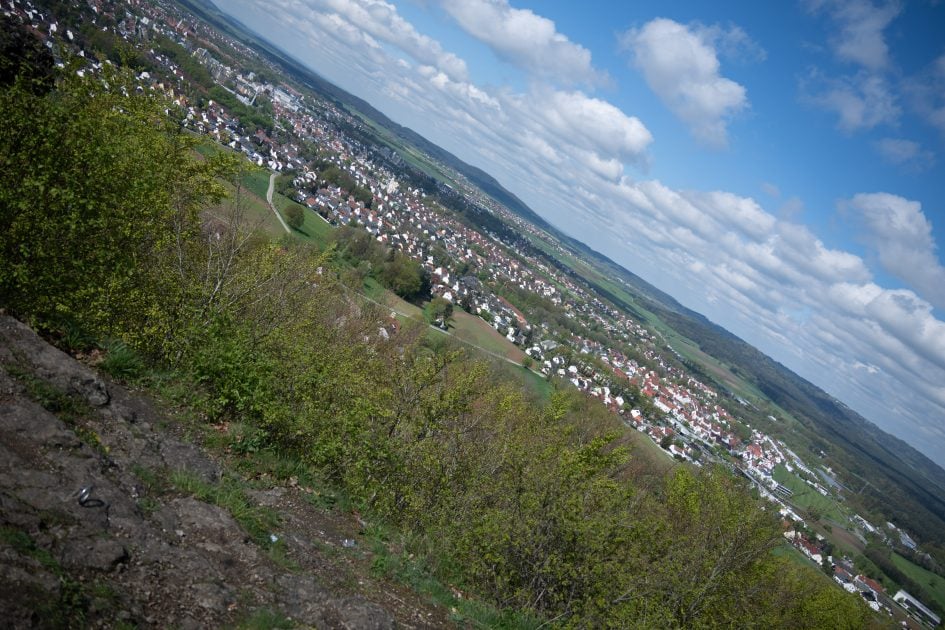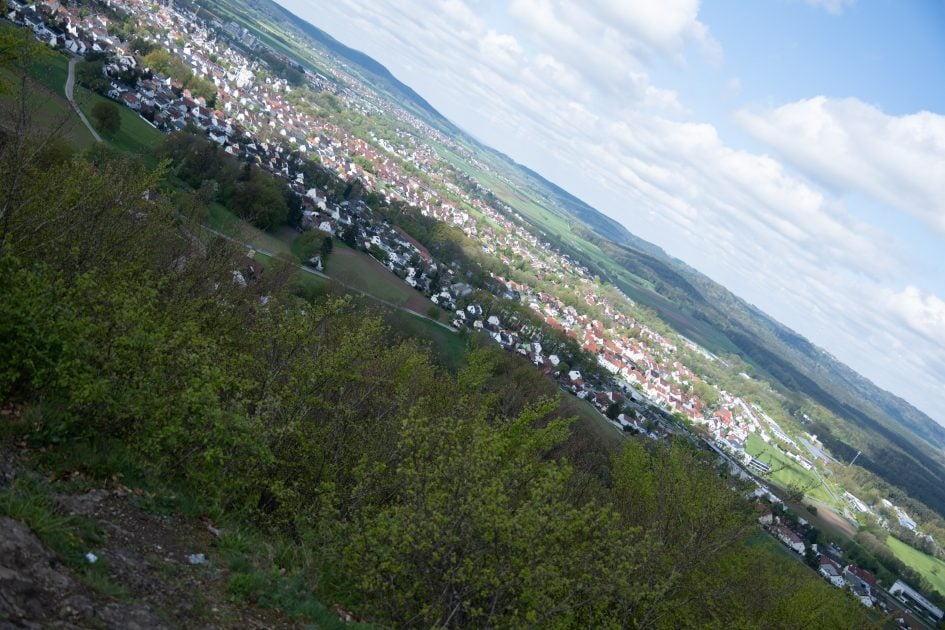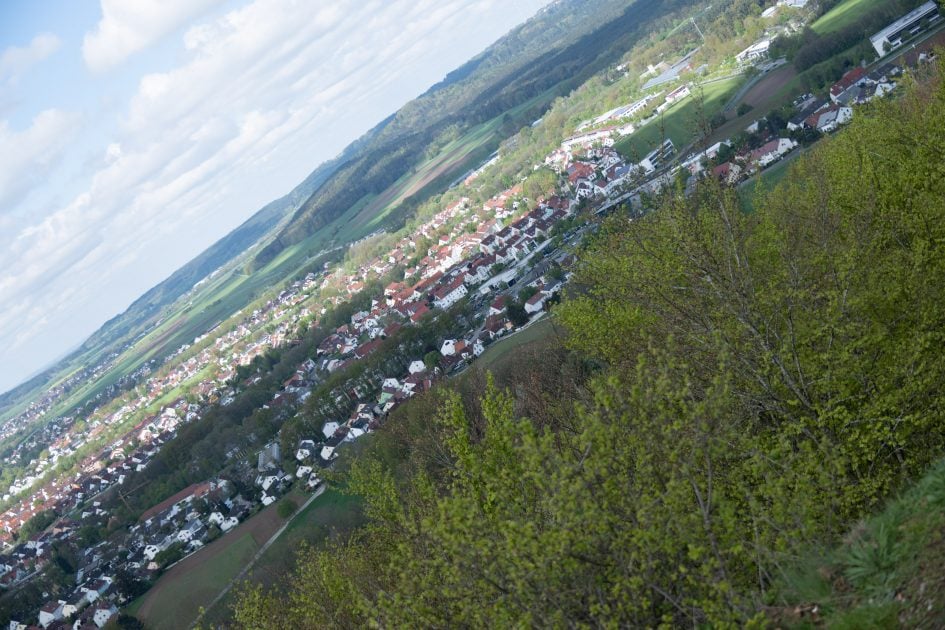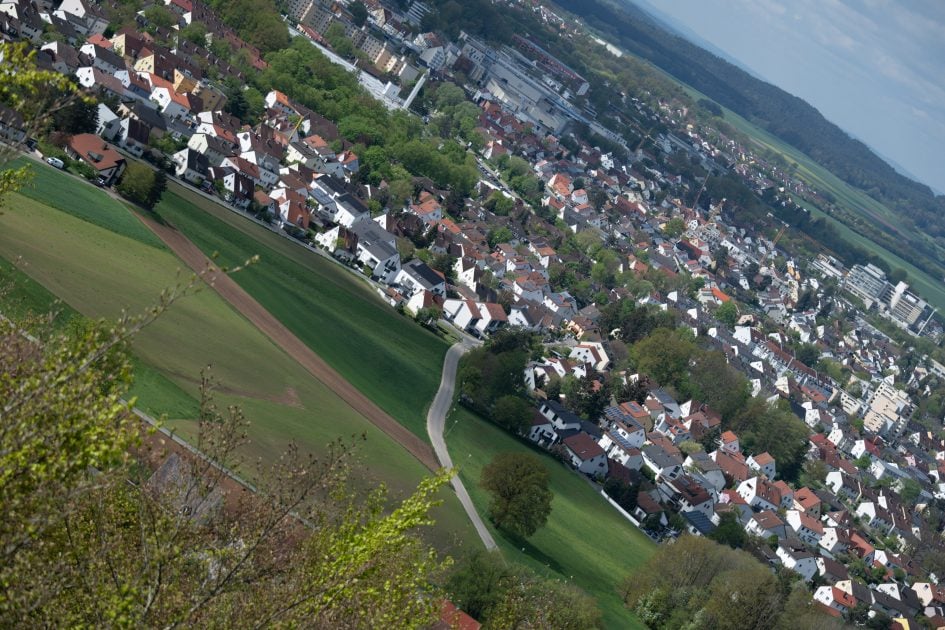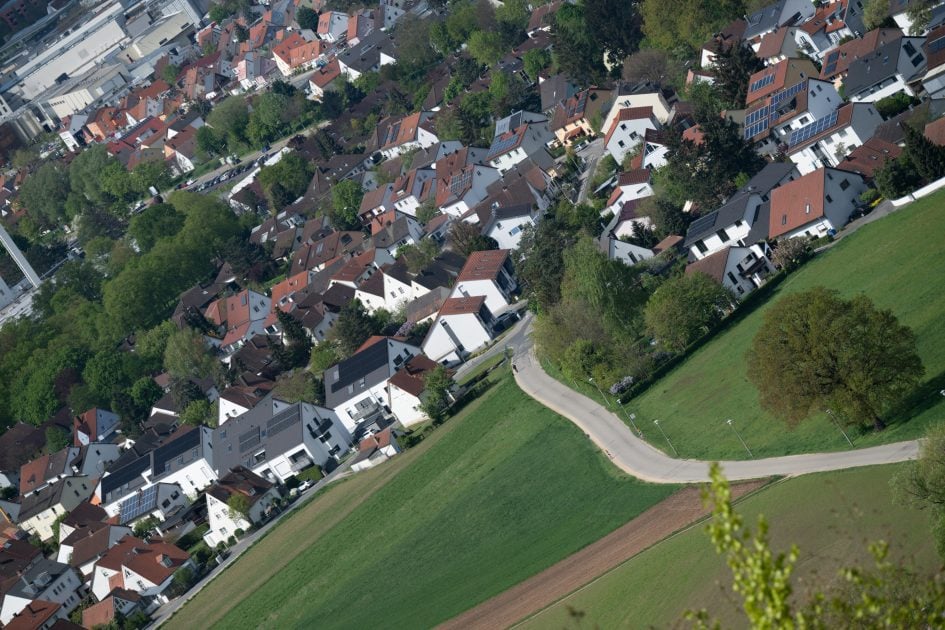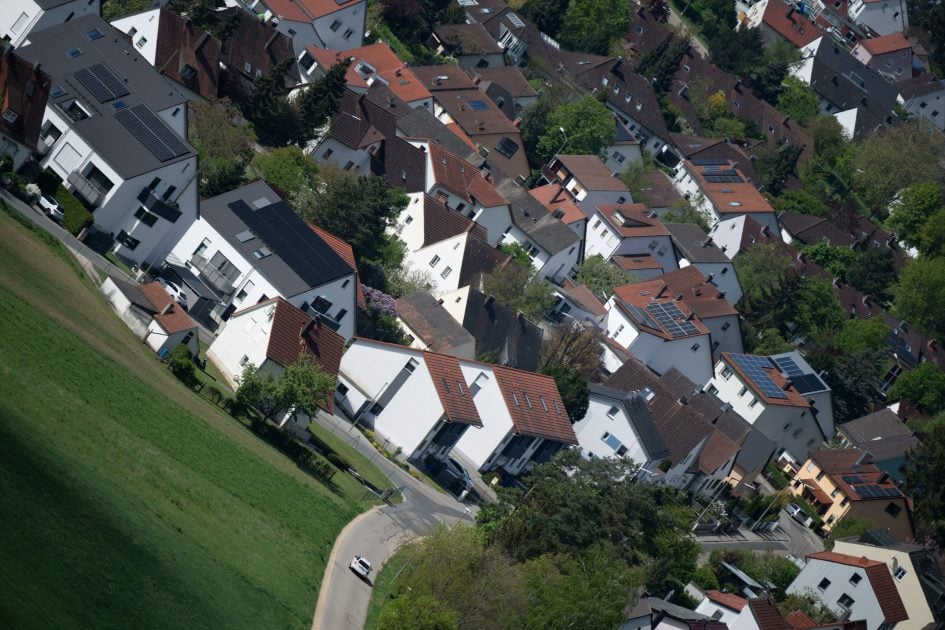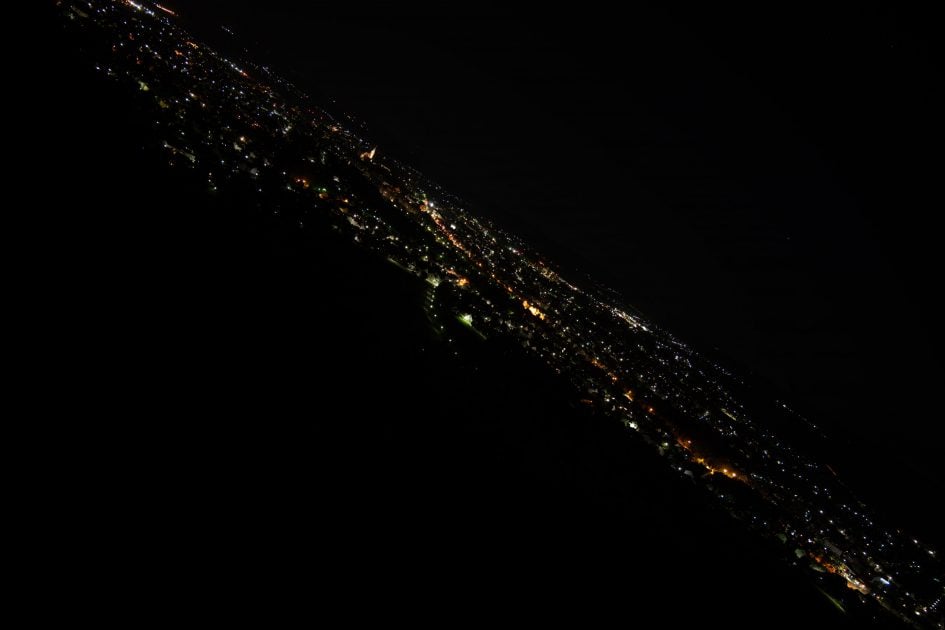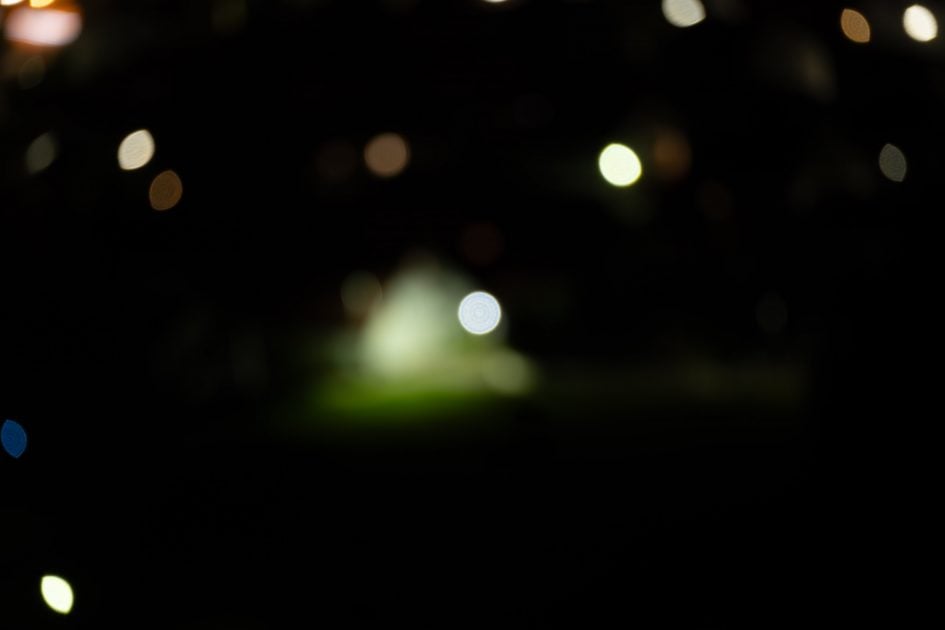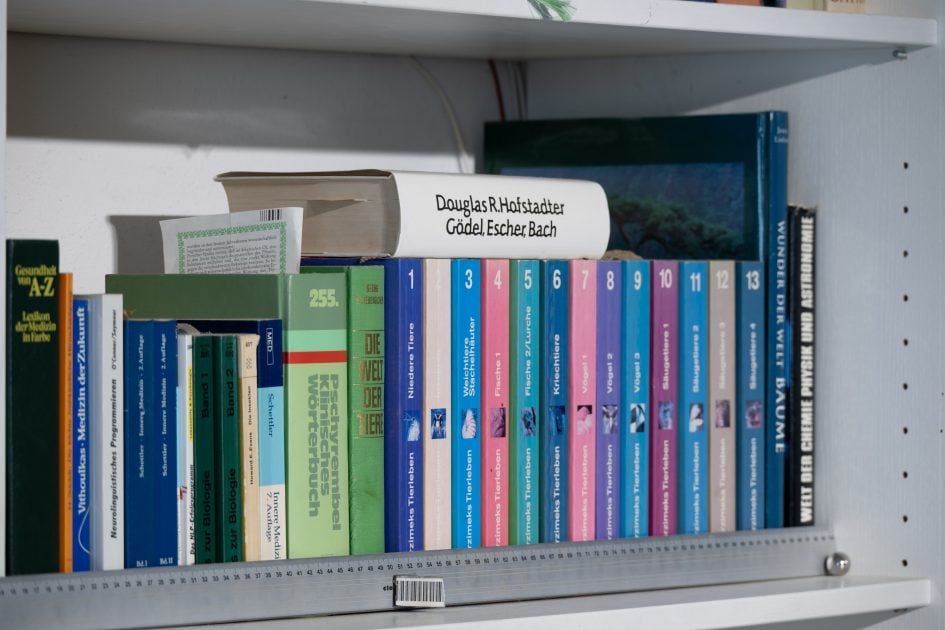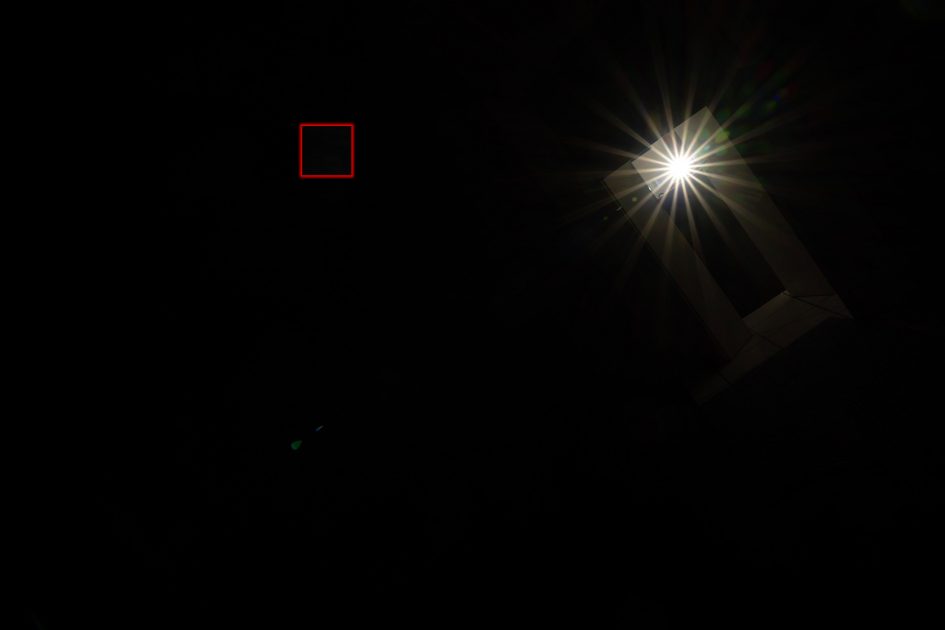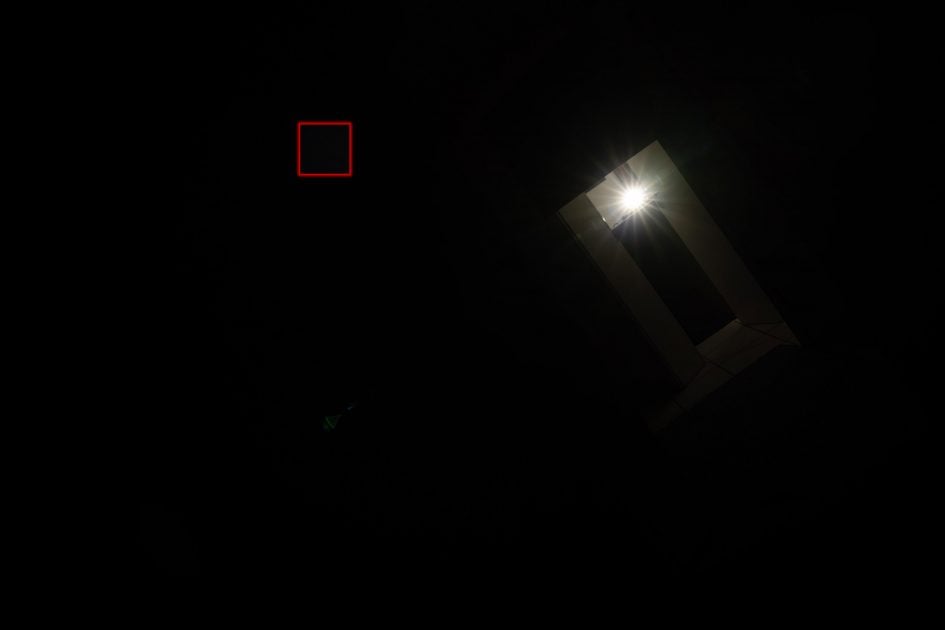Nikon Z 28-400mm f4-8 VR review
-
-
Written by Thomas
Quality
Longitudinal Chromatic Aberration and focus shift
I tested the Nikon Z 28-400mm f4-8 VR at 240mm and 28mm for longitudinal color aberrations (loCA, a.k.a. “axial color” or “bokeh CA”) and focus shift. The former can show up as magenta coloration in the foreground and greenish hues in the background and are not easily corrected in post-processing. The lens shows practically no loCA or focus shift, probably a result of the lowly focal ratio:
Nikon Z 28-400mm f4-8 VR longitudinal Chromatic Aberration (loCA) at 28mm
100% crops at 28mm f4.0 (top), f5.6 (middle), f8.0 (bottom); 100% crops, left = foreground, right = background
In all of my test-shots with the the Nikon Z 28-400mm f4-8 VR I could not detect any noteworthy purple fringing around high-contrast edges or specular highlights in the focus plane. Not even in the torture test with the fountain in bright sunlight (see image at the bottom of the next page).

Spill-over of bright background light is relatively well controlled as is green outlining around background subjects which can only be seen under the harshest conditions.
Sharpness and contrast
Let’s have a look at the theoretical performance of the new Nikon Z 28-400mm f4-8 VR and compare it to the alternatives:
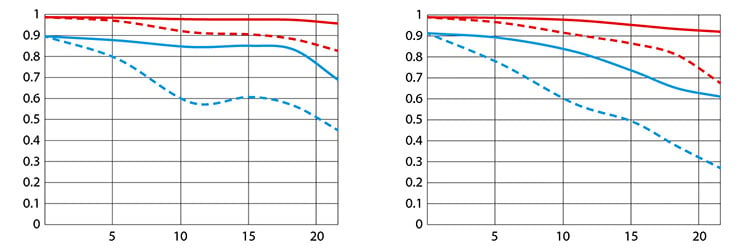
Above: Nikon Z 28-400mm f4-8 VR, 28mm f4.0 (left), 400mm f8.0 (right)
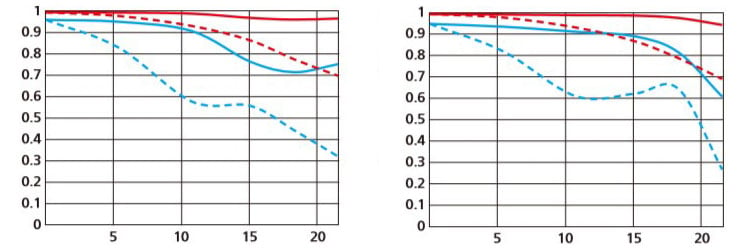
Above: Nikon Z 24-200mm f4-6.3 VR, 24mm f4.0 (left), 200mm f6.3 (right)
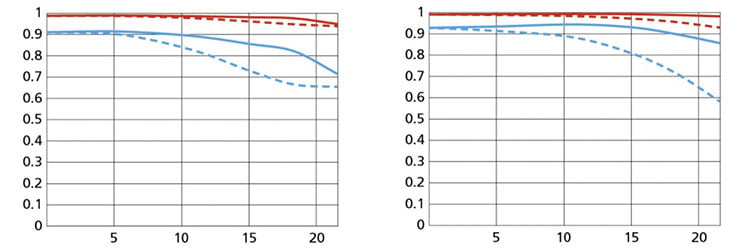
Above: Nikon Z 100-400mm f4.5-5.6 VR, 100mm f4.5 (left), 400mm f5.6 (right)
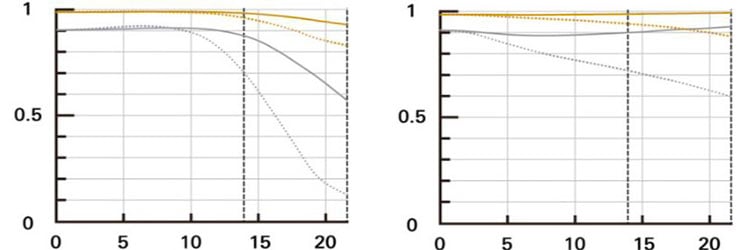
Above: Tamron 70-300mm f4.5-6.3 Di III, 70mm f4.5 (left), 300mm f6.3 (right)
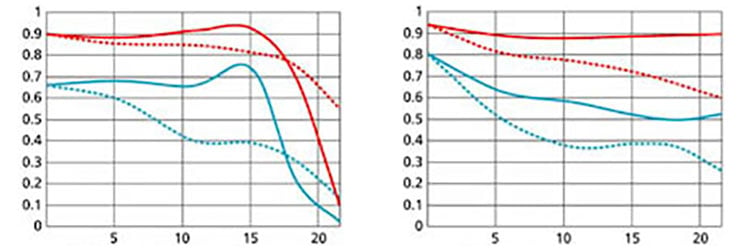
Above: Nikon AF-S 28-300mm f3.5-5.6 G ED VR, 28mm f3.5 (left), 300mm f5.6 (right)
These MTF charts show the computed lens-performance of lenses wide open without influence of diffraction at 10 line-pairs/mm (red/yellow) and 30 lp/mm (blue/grey). Higher values are better (more contrast) and the closer the dotted and solid lines are together the less contrast dependents on the orientation of the test-pattern (less astigmatism). The x-axis displays the distance from the optical axis (=center of the sensor) in mm.
From the charts the Nikon Z 28-400mm f4-8 VR should be so much better than its AF-S 28-300mm predecessor on F-mount. Which simply shows how far lens design has come in the last 14 years. Comparison with the Z 24-200mm from 2020 shows more subtle differences: The Z 24-200mm even seems to produce finer details up to 10mm image height. At 400mm focal length the Z 100-400mm clearly looks superior even at f5.6 (versus f8.0 for the Z 28-400mm).
Let’s see how this theoretical performance translates into real life results in the sharpness test based on Siemens-stars shot on a 45MP Nikon Z8 set to 16 image Pixel shift shooting (except at 400mm focal length). The 16 individual images for each shot were merged in NX Studio 1.6.1 into a 180MP RAW file and further processed in Lightroom 13.2/CRAW 16.2 to Adobe Color profile with the lens profile compensating CA, distortions and vignetting. Noise-reduction was set to 0, sharpening to 50/1/36/10, with no extra tone, color, or saturation adjustment. White-balance was adjusted to a neutral white and I did some exposure compensation to make the brightness of all crops match. So you will not see light fall-off in the corners. I also focused separately for the center, the DX-corner, and FX-corner which eliminates any effect field-curvature might have. If you want to know more about the advantages and perils of pixel shift shooting head over to page 2 of my Tamron 28-75mm f2.8 Nikon Z review.
First up is an overview of the wide-open performance at different focal lengths. You can jump to the detailed results at different apertures and comparisons with other lenses by clicking on the crops of the respective focal length.
Nikon Z 28-400mm f4-8 VR; 50% crops from 180MP image near center, DX-corner, FX-corner
Above: 28mm, f4.0
Above: 35mm, f4.5
Above: 50mm, f5.6
Above: 105mm, f6.3
Above: 220mm, f8.0
Above: 400mm, f8.0; 100% crops from 45MP
Nikon’s Z 28-400mm is best at 28mm where the centers looks very sharp and the DX-corner is good. Only the FX-corner is a bit soft but reveals enough detail for most purposes. Zooming in to 35mm results in a visible drop in DX-corner sharpness while the center stays at good to very good quality. Zooming in further makes the center gradually softer especially beyond 105mm while DX-corner and FX-corner recover a bit around 105mm and 220mm focal length. Field curvature is present at all focal lengths.
Detailed results:
The following crops for each focal length show the Nikon Z 28-400mm f4-8 VR from wide open down to f11 compared to the Nikon Z 24-200mm f4-6.3 and Nikon Z 100-400mm f4.5-5.6 VR S at 28mm, 35mm, 50mm, 105mm, 220mm, and 400mm. Or you skip the detail and fast-forward to the summary for this chapter.
Performance at 28mm:
Nikon Z 28-400mm f4-8 VR at 28mm compared; 50% crops from 180MP image near center, DX-corner, FX-corner
Above: Nikon Z 28-400mm f4-8 VR at 28mm, f4.0; click image for full resolution 100% crops

Above: Nikon Z 24-200mm f4-6.3 on a Nikon Z7 (100% crops from 45MP) at 28mm, f4.2; also available at f5.6, f8.0, f11 and at 24mm f4.0, f5.6, f8.0, f11
Above: Nikon Z 28-400mm f4-8 VR at 28mm, f5.6; click image for full resolution 100% crops; also available at f8.0, f11
At 28mm the Z 28-400mm and Z 24-200mm look pretty similar across the sensor – with a slight advantage in the DX-corner for the Z 28-400mm.
Performance at 35mm:
Nikon Z 28-400mm f4-8 VR at 35mm compared; 50% crops from 180MP image near center, DX-corner, FX-corner
Above: Nikon Z 28-400mm f4-8 VR at 35mm, f4.5; click image for full resolution 100% crops

Above: Nikon Z 24-200mm f4-6.3 on a Nikon Z7 (100% crops from 45MP) at 35mm, f4.8; also available at f5.6, f8.0, f11
Above: Nikon Z 28-400mm f4-8 VR at 35mm, f5.6; click image for full resolution 100% crops; also available at f8.0, f11
With the clear drop in DX-corner resolution and a slight softening of the center on the Z 28-400mm the Z 24-200mm now looks clearly sharper across the sensor – even when the Z 28-400mm is stopped down to f5.6.
Performance at 50mm:
Nikon Z 28-400mm f4-8 VR at 50mm compared; 50% crops from 180MP image near center, DX-corner, FX-corner
Above: Nikon Z 28-400mm f4-8 VR at 50mm, f5.6; click image for full resolution 100% crops

Above: Nikon Z 24-200mm f4-6.3 on a Nikon Z7 (100% crops from 45MP) at 50mm, f5.6; also available at f8.0, f11
Above: Nikon Z 28-400mm f4-8 VR at 50mm, f8.0; click image for full resolution 100% crops; also available at f11
Similar results at 50mm: The Z 24-200mm is the sharper lens.
Performance at 105mm:
Nikon Z 28-400mm f4-8 VR at 105mm compared; 50% crops from 180MP image near center, DX-corner, FX-corner
Above: Nikon Z 28-400mm f4-8 VR at 105mm, f6.3; click image for full resolution 100% crops

Above: Nikon Z 24-200mm f4-6.3 on a Nikon Z7 (100% crops from 45MP) at 105mm, f6.3; also available at f8.0, f11

Above: Nikon Z 100-400mm f4.5-5.6 VR S on a Nikon Z7 (100% crops from 45MP) at 100mm, f5.6; also available at f4.5, f8.0, f11
Above: Nikon Z 28-400mm f4-8 VR at 105mm, f8.0; click image for full resolution 100% crops; also available at f11
At 105mm the Z 100-400mm f4.5-5-9 VR S joins the competition and clearly beats both super-zooms. Between the Z 28-400mm and the Z24-200mm the latter produces the sharper DX image-circle while the Z 28-400mm f4-8 VR shows more detail in the FX-corner.
Performance at 220mm:
Nikon Z 28-400mm f4-8 VR at 220mm compared; 50% crops from 180MP image near center, DX-corner, FX-corner
Above: Nikon Z 28-400mm f4-8 VR at 220mm, f8.0; click image for full resolution 100% crops

Above: Nikon Z 24-200mm f4-6.3 on a Nikon Z7 (100% crops from 45MP) at 200mm, f8.0; also available at f6.3, f11

Above: Nikon Z 100-400mm f4.5-5.6 VR S on a Nikon Z7 (100% crops from 45MP) at 200mm, f5.6; also available at f5.0, f8.0, f11
Above: Nikon Z 28-400mm f4-8 VR at 220mm, f11; click image for full resolution 100% crops
At 200/220mm both super-zooms seem neck-and-neck while the Z 100-400mm clearly is the sharper tool (even at f5.6).
Performance at 400mm:
Nikon Z 28-400mm f4-8 VR at 400mm compared; 100% crops from 45MP image near center, DX-corner, FX-corner

Above: Nikon Z 28-400mm f4-8 VR at 400mm, f8.0

Above: Nikon Z 100-400mm f4.5-5.6 VR S on a Nikon Z7 at 400mm, f5.6; also available at f8.0, f11

Above: Nikon Z 28-400mm f4-8 VR at 400mm, f11
Again the optical superiority of the Z 100-400mm f4.5-5.6 VR S clearly shows (compared here at f5.6) and the gap in performance cannot be closed by stopping the Z 28-400mm down.
Summary:
The comparisons show that Nikon’s Z 28-400mm f4-8 VR zoom is quite a bit softer than their Z 24-200mm f4-6.3 (except at 28mm). Closing the aperture does improve sharpness a bit but then you lose valuable light gathering power and background separation, and diffraction starts to limit the gains in acuity.
Performance at long distances
The Siemens-star test-targets are shot at a distance of 45x focal length (i.e. at around 5m for 105mm focal length). But performance of lenses also depends on the shooting distance. Therefore, I shot another series of images of a city around 1 km away. The images are 45MP RAW files from a Nikon Z8 developed in Lightroom 13.2/CRAW 16.2 to Adobe Color profile with the lens profile compensating CA, distortions and vignetting. Noise-reduction is set to 0, sharpening to 50/0.5/36/10, with no extra tone, color, or saturation adjustment. All shots were made from a heavy tripod with image stabilization switched off at ISO 64. As usual I have selected the diagonal that provided the better corner results as the lens was a bit decentered.
The following images show the complete scene wide open plus 100% crops from near center, DX-corner, and FX-corner. You can access the large originals, but the files are for personal evaluation only and cannot be used in another publication or website without permission.
Nikon Z 28-400mm f4-8 VR at 28mm

Above: Nikon Z 28-400mm f4-8 VR at 28mm, f4.0; click image for 4k version, here for large original; crops also available at f5.6, f8.0, f11
Nikon Z 28-400mm f4-8 VR at 35mm

Above: Nikon Z 28-400mm f4-8 VR at 35mm, f4.5; click image for 4k version, here for large original; crops also available at f5.6, f8.0, f11
Nikon Z 28-400mm f4-8 VR at 50mm

Above: Nikon Z 28-400mm f4-8 VR at 50mm, f5.6; click image for 4k version, here for large original; crops also available at f8.0, f11
Nikon Z 28-400mm f4-8 VR at 105mm

Above: Nikon Z 28-400mm f4-8 VR at 105mm, f6.3; click image for 4k version, here for large original; crops also available at f8.0, f11
Nikon Z 28-400mm f4-8 VR at 200mm

Above: Nikon Z 28-400mm f4-8 VR at 200mm, f8.0; click image for 4k version, here for large original; crops also available at f11
Nikon Z 28-400mm f4-8 VR at 400mm

Above: Nikon Z 28-400mm f4-8 VR at 400mm, f8.0; click image for 4k version, here for large original; crops also available at f11
Summary:
In this long-distance test the Nikon Z 28-400mm f4-8 VR shows very good center sharpness up to 105mm then becomes a bit softer at 200mm and again at 400mm. The DX-corner is pretty good at 28mm, 105mm and 200mm. And the FX-corner delivers very usable results throughout the zoom range.
Overall this Z-Nikkor certainly is one of the softer lenses in Nikon’s Z line-up and I wouldn’t use it for 180MP pixel shift shooting. But if you refrain from pixel-peeping and restrict viewing to 4k resolution you will not be disappointed. And remember: This lens has an enormous 14.3x zoom range!
Vignetting and distortions
To make it easier to see light fall-off in the corners of a full-frame sensor I’ve arranged a series of three shots each with the Nikon Z 28-400mm f4-8 VR at 28mm and 400mm focal length and different apertures. All images were developed from RAW to the same brightness in the center and are shown with vignetting correction from the lens profile Off (1st row) or Normal/100% (2nd row):
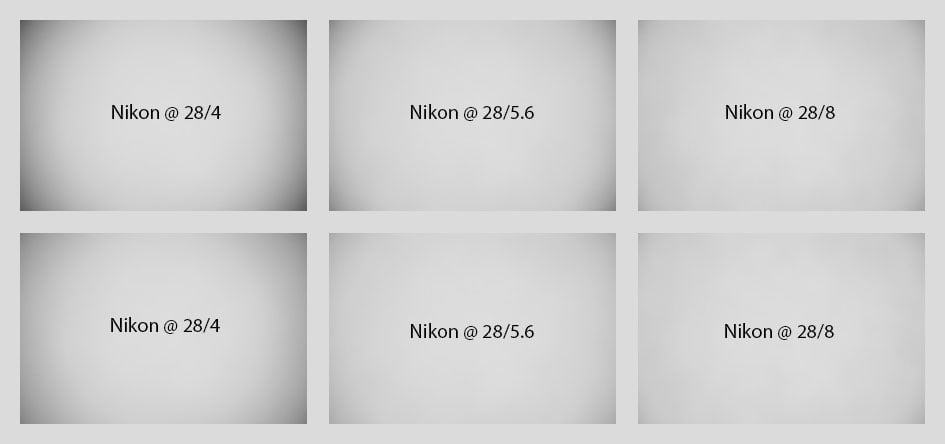
Above: Nikon Z 28-400mm f4-8 VR at 28mm focal length with vignette correction Off (top) or Normal/100% (bottom)
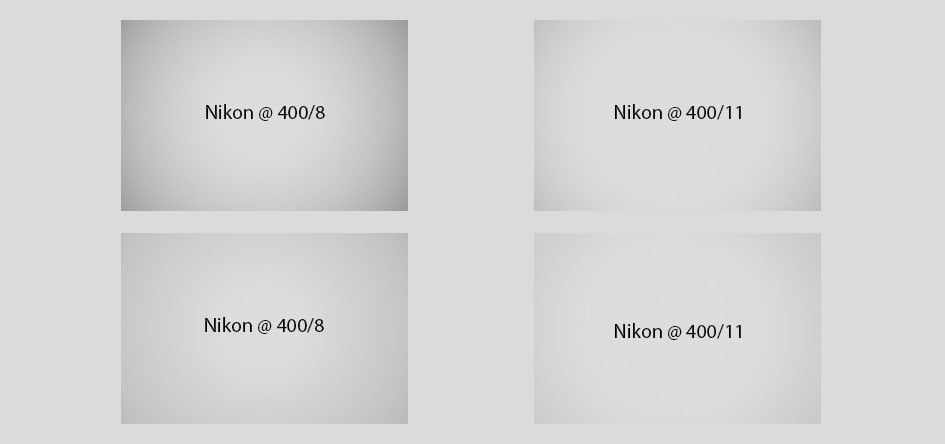
Above: Nikon Z 28-400mm f4-8 VR at 400mm focal length with vignette correction Off (top) or Normal/100% (bottom)
At 28mm, f4.0 vignetting is pretty strong if left uncorrected. Correction with the lens profile set to normal/100% lifts the FX-corner by 0.6 EV at f4.0 and still leaves visible vignetting. At 400mm focal length light fall-off is less critical. The lens profile lifts the FX-corner by 0.5 EV at f8.0 which makes falloff pretty unobtrusive. Btw.: Adobe’s RAW converter applies vignette correction as it was set in camera and cannot be changed – while in Nikon’s Studio NX you can switch vignette control on/off (and change the strength of correction) regardless of the camera settings.
Regarding distortions: The lens profile corrects them well. But Nikon does not allow you to switch off distortion correction for the Z 28-400mm f4-8 VR in camera. That’s the same as with the Z 24-200mm f4-6.3. And neither Nikon’s nor Adobe’s software allow switching correction off either.
Rendering of point-light sources at night-shots
Night-shots pose a different challenge for lenses as the contrast is even higher than under bright sun and point-light sources can reveal some weaknesses such as coma, haloing and colour-aberrations that do not show up as prominently in other test-shots. The 100% crops below the main image show the effect of coma in the FF-corner of the Nikon Z 28-400mm f4-8 VR at 28mm focal length and different apertures:
Above: Nikon Z 28-400mm f4-8 VR at 28mm, f4.0; click image for 4k version, here for large original

Above: Nikon Z 28-400mm f4-8 VR at 28mm; 100% crops from the FX-corner at f4.0 (left), f5.6 (middle), f8.0 (right)
The Nikon Z 28-400mm f4-8 VR shows little coma at 28mm. But there’s a blue tail/halo which develops around bright streetlights starting at 8mm image height and getting progressively stronger towards the FX-corner.
Bokeh quality
This test is for the rendering of point-light sources in an out-of-focus background. The circle of confusion that is produced by the test is pretty indicative of Bokeh performance (in the background) and light fall-off. Ideally the out-of-focus image of the point-light is evenly lit and perfectly circular, with no “onion-rings”, and without coloration. Lenses normally produce an effect known as “cat’s eye” the further away from the optical axis the point-light is projected. This is due to optical vignetting in the lens barrel when light enters the lens from an angle.
Above: Nikon Z 28-400mm f4-8 VR at 400mm, f8.0; click image for 4k version
Above: Nikon Z 28-400mm f4-8 VR at 400mm, f8.0; click image for 100% crops
Above: Nikon Z 28-400mm f4-8 VR at 400mm, f11; click image for 100% crops
Above: Nikon Z 28-400mm f4-8 VR at 400mm, f16; click image for 100% crops
The diameter of the Bokeh balls in the center is determined by the entrance pupil of the lens which is 50mm. Compression of the circle in the DX-corner is very visible at f8.0 but does not become much stronger towards the FX-corner. The inside of the Bokeh balls shows mild onion-rings and a slightly stronger outline – but without coloration from loCA.
Let’s see how this analysis of out-of-focus point-light sources translates into Bokeh-performance shooting a book-shelf. Crops are from the foreground, middle-ground, and background resized to make them comparable across all my reviews. I used the longest focal length that I could to produce a comparable shot to my other reviews which was 170mm:
Above: Nikon Z 28-400mm f4-8 VR at 170mm, f7.6; click image for 4k version, here for large original
Above: Nikon Z 28-400mm f4-8 VR at 170mm, f7.6; click image for 4k version, here for large original
Looking at the crops it is immediately clear that the Z 28-400mm f4-8 VR does not produce a strong Bokeh due to its slow focal ratio. You need to shoot at much larger magnifications (closer distances) to get a stronger out-of-focus effect. As it was shot here Bokeh at least does not look harsh and shows no coloration. Looking at the ruler (below, now at 100%) shows that the lens produces only weak double-contours – stronger in the foreground, less in the background:

Above: Nikon Z 28-400mm f4-8 VR at 170mm, f7.6; click image for 4k version, here for large original
Close-up performance
The Nikon Z 28-400mm f4-8 VR achieves a maximum magnification of 1:2.6 in close-up shooting at 28mm focal length where the area of sharp focus is just 67 x 101mm. The following shots were done at 1:3.1 magnification with crops from 0mm, 12mm, and 20mm off the center of the sensor respectively.
Nikon Z 28-400mm f4-8 VR at 28mm, 1:3.1 magnification; 100% crops

Above: Nikon Z 28-400mm f4-8 VR at 28mm, f4.0

Above: Nikon Z 28-400mm f4-8 VR at 28mm, f8.0

Above: Nikon Z 28-400mm f4-8 VR at 28mm, f16
While the center is pretty sharp already at f4.0, the DX-corner looks mushy even stopped down to f16. Field curvature plays a major role but even focusing specifically on the eye (see following images) does not lift the DX-corner to good sharpness:

Above: Nikon Z 28-400mm f4-8 VR at 28mm, f8.0, f11, 16
At 400mm focal length the lens achieves a maximum magnification of 1:3.1 with an area of sharp focus of 91 x 137mm. The following shots were done at 1:3.2 magnification with crops from 0mm, 11mm, and 20mm off the center of the sensor respectively.
Nikon Z 28-400mm f4-8 VR at 400mm, 1:3.2 magnification; 100% crops

Above: Nikon Z 28-400mm f4-8 VR at 400mm, f8.0

Above: Nikon Z 28-400mm f4-8 VR at 400mm, f11

Above: Nikon Z 28-400mm f4-8 VR at 400mm, f16
The results are now much better than at 28mm: The DX image-circle becomes usable at f11 and improves further at f16. Field curvature is clearly reduced: Focusing specifically on the eye (see following images) does not yield significant improvements.

Above: Nikon Z 28-400mm f4-8 VR at 400mm, f8.0, f11, 16
Flare, ghosting, and sun-stars
Catching a strong light-source shining directly into the lens is always a risky business: it could produce strange colorful ghost-images or reduce contrast considerably through flare and glare. The appearance of flare and ghosting depends on factors like the aperture and the angle of the light hitting the lens. So to judge the proclivity of the Nikon Z 28-400mm f4-8 VR for these artifacts I went through a series of well calculated shots against a strong light source to provoke glare and ghosting. The lens hood was mounted in all shots. Following are two examples with flares. But they are so weak that you probably need to open the +3 EV version of the images to see them. The little red square inset in the upper left shows the respective area with an exposure compensation of +3 EV to make it easier to see which levels of black the lens renders at that point:
Above: Flare and ghosting. Strong light hitting the Nikon Z 28-400mm f4-8 VR at 28mm, f11; click image for 4k version or here for +3 EV exposure compensation
Above: Flare and ghosting. Strong light hitting the Nikon Z 28-400mm f4-8 VR at 28mm, f4.0; click image for 4k version or here for +3 EV exposure compensation
At the short end the Nikon Z 28-400mm f4-8 VR produces only little ghosting artifacts and no veiling glare: The blacks stay deep black so the lens can confidently be used in challenging contra-light situations. A very good result for such a complex optical design.
At 28mm focal length the lens produces weak sunstars already at f4.0. But at f8 and f11 they look very nice:

Above: Sunstars from the Nikon Z 28-400mm f4-8 VR at 28mm, f4.0, f5.6, f8.0; 100% crops
Next check out my sample images!
Check prices on the Nikon Z 28-400mm f4-8 VR at B&H, Adorama, WEX UK or Calumet.de. Alternatively get yourself a copy of my In Camera book, an official Cameralabs T-shirt or mug, or treat me to a coffee! Thanks!